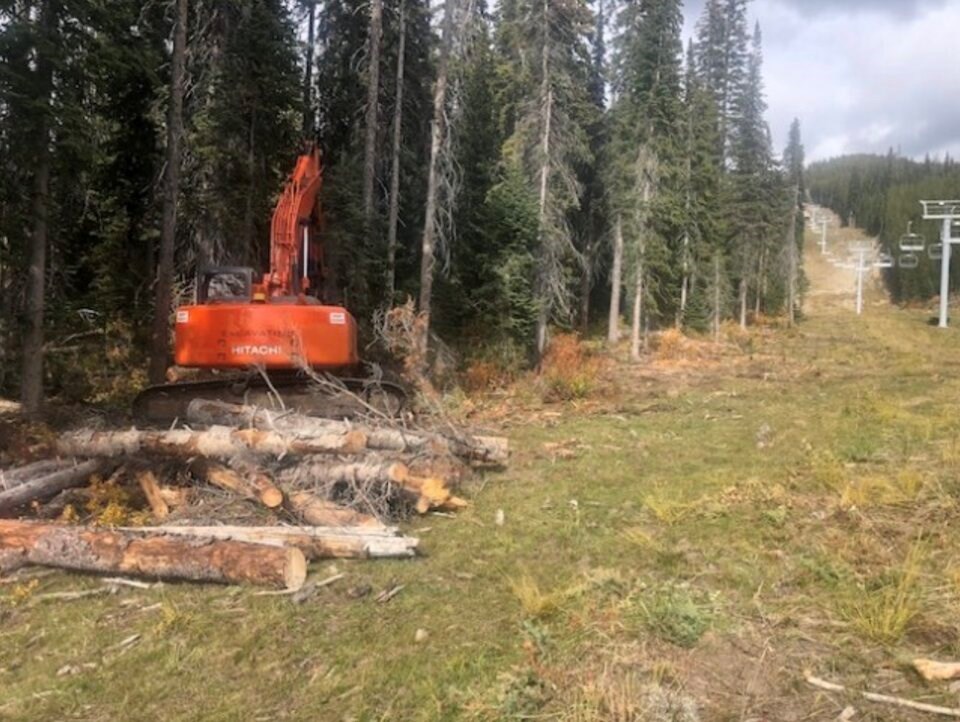With wildfire season looming for the Okanagan, a West Kelowna neighbourhood association is lobbying for more fire prevention and is suggesting ideas for two of the community's largest problems.
The Glenrosa Residents Association has written to city hall asking that a fire break be constructed around the city.
“All of our directors have been personally affected by the recent wildfires, whether it was on alert or being evacuated or taking in evacuees,” said association president Jared Franczak in an interview with Castanet.
“It's time that more prevention and mitigation is done.”
The association is also floating the idea that solar panels be installed in the areas cleared for the fire break, generating electricity for the community similarly to a solar farm in Summerland that opened last year.
Franczak says the association feels more could be done to protect the city from wildfires.
“It seems like every year, we're fighting these fires, they pop up, and it's a reactive situation, not proactive," he said.
The City of Whitehorse in the Yukon is in the process of building a massive fuel break around the city, but it's not a strategy being adopted in B.C. for a number of reasons.
Erosion concerns
In response to questions from Castanet, the BC Wildfire Service says that while fuel breaks are used in battling active fires, they are not “a permanent feature we want on the landscape.”
“When all vegetation is removed in a linear line to form a fire break around a community, a number of issues could come up,” the agency said in a statement.
“Depending upon the terrain, erosion can become a problem if there is no vegetation in place to stabilize the soil. This can result in destabilization of slopes and debris flows after heavy rain.”
BCWS said when vegetation is removed, something will start growing back right away, often invasive species that are well adapted to growing in disturbed soil.
Some of those invasives are also especially flammable.
“Even if it's just grasses that move in, dry grass is a wildfire hazard. It doesn't burn long, but grass ignites quickly and fire could easily jump across a grass-covered cut,” said BCWS.
Because trees have been removed in a line, those sun-exposed areas will also dry out faster, “have less relative humidity than the shaded understory, and could help create a wind-tunnel effect.”
“If you still have a dense forest full of fuels on both sides of the line you've cut, you still have a lot of fuel ready to burn if a fire burns through the area. Wildfires often generate embers that travel over two kilometres, so a small firebreak won't achieve much in the way of reducing wildfire risk.”
That ability for a wildfire to spot ahead of itself was on display last summer when the McDougall Creek wildfire jumped Okanagan Lake from West Kelowna to Kelowna and Lake Country.
Reducing forest fuels
Instead of taking out swaths of forest, BCWS said it is instead best to strategically reduce forest fuels in areas of highest risk to nearby communities.
Traditional wildfire mitigation sees fuels removed from the forest floor along with standing dead timber. Branches lower to the ground are removed to prevent the fire from spreading into the canopy, which can also be thinned out through selective tree removal.
“The treated forest is now much more open, and the remaining canopy helps shade the area and maintain higher relative humidity. This helps achieve several objectives. Not only is the energy potential of a wildfire greatly reduced due to less available fuel and higher humidity, but wildfire fighters are also able to better operate in the area to manage fire should one occur,” said BCWS.
Maintenance on that forest can then be performed “easier and more affordable” every few years.
BCWS holds up Logan Lake, B.C., Canada's first FireSmart community as proof that the method works. In August 2021 the the Tremont Creek wildfire burned through the community but without losing any structures.
BCWS says there are provincial programs like the Crown Land Wildfire Risk Reduction program and FireSmart Community Funding Supports that fund this kind of work.
“It's understandable for citizens of a neighbourhood to lobby local leadership to protect their communities from wildfire and ask about the status of fuel reduction projects,” BCWS said, adding residents should also take responsibility for their property with tools available at FireSmartBC.ca.
On May 25, the City of West Kelowna is hosting FireSmart Family Day at the fire hall on Old Okanagan Highway where residents will be able to learn how to protect their properties.



